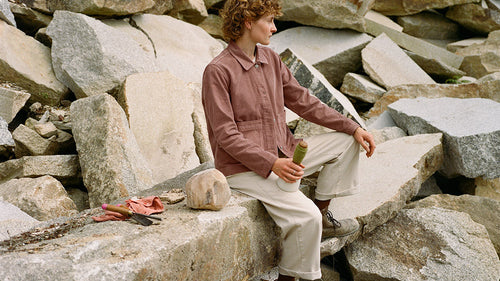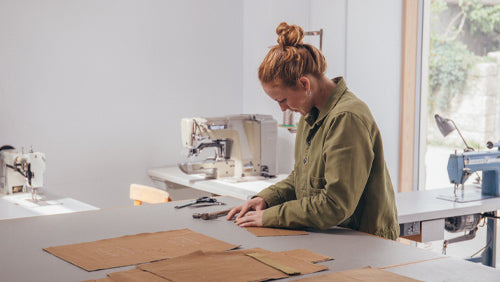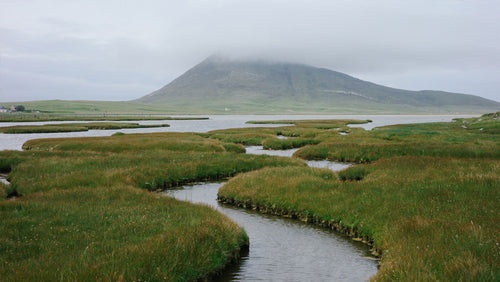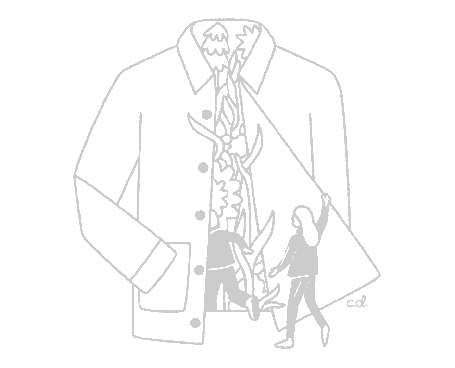From our earliest ideas to every decision we made, we kept track of the creative process behind Batch No.2 in Batch Notes, a space that shows the timeline from creative seed to sampling and photoshoot planning, for our second jacket.
Those jackets sold out pretty quickly, and now they're in production at our factory in Portugal.
In the factory
The last few times you walked into a shop or browsed online, did you think about who's hands and heads were involved in bringing it to life, or getting it into the shop? Didn't think so. It's pretty rare to consider the journey behind something when you see it in finished form, but when products are made by such good people and fabrics, it's worth talking about it. If anything hopefully showing this side of the process means we'll all ask more questions about the origins of the stuff we buy.
So here you go - here's exactly what happened after Batch No.2 sold out.
48 people are employed here, including everyone from the making team to the accounts team.
Step 1: Fabric testing
On the Monday after we sold out, we placed our order on FaceTime with Sergio. A face to face meeting is better than a thousand emails. Sergio and his team pass on their thanks.
The same week, our fabric that had been 10 weeks in the making arrived from Alsace, France. Each roll was sent 20km up the road to Agostinho's dye house.
It's not time to dye just yet, first we test each roll of fabric for shrinkage, to make sure the pattern is calculated exactly to the right dimensions.
Jackets naturally shrink a little when they are dyed, so we increase our measurements to accommodate. Agostinho determines the temperature based on these tests. Then, they won't shrink again once they're in your hands.
Step 2: Fabric is prepped to be cut

The Dye House near Guimarães, run by Agostinho. Waste water is recycled in their on-site plant.
With each roll back from the dye house, cutting begins. Once the pattern has been adjusted for natural shrinkage, Sandra in the pattern room calculates how to make each piece fit onto fabric laid out flat, making sure there's as little waste as possible. Then, each size is cut with scissors and a keen eye.
At every stage throughout the making process, your jacket is being checked by Sergio, Lutz and their team. To put it simply, they're ruthless. If there are any details less than perfect, they don't cut corners, they start all over again.
Once cut, each size is stored in a clean pile, separated from the other sizes, so that no parts can be mixed up.
Step 3: Fabric is cut, and sewing begins

Pockets with neat little hems inside.
Next, sewing begins. First, we look after the details, such as collars and hemming the inside of every pocket.
Once the body is sewn together, and the pockets are on, it's time to add the arms, and the limited edition label by Hiller Goodspeed. Each pocket is sewn and the edges pressed before the pocket band is added. Then, they'll be joined to the body of the jacket.

Another intricate part of the process is the collar. Each collar has a subtle zig zag stitching on the underside.
What follows next is the body itself, button panels, hems and the addition of pockets, before the arms are joined. That's why every jacket goes through a day of looking like a little waistcoat before the arms are sewn on.

And here we are, after two days of sewing, the first jackets have arms, and their limited edition Hiller Goodspeed woven labels.

Step 4: Fully sewn jackets head to the dye house
By mid November, all 300 jackets will have finished the sewing stages and will have gone to the dye house, to become navy, olive, dusty pink and ecru jackets.

Tip 5: Back to the factory for buttons and quality checks
After 7 hours dying and drying, they'll be heading back to the factory for buttons to be sewn on and a final quality check before they are sent to us around the end of the month.
To be continued...




